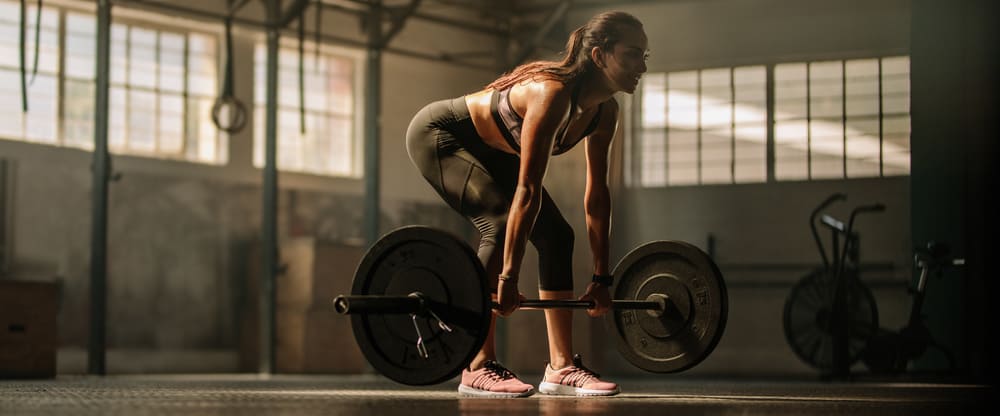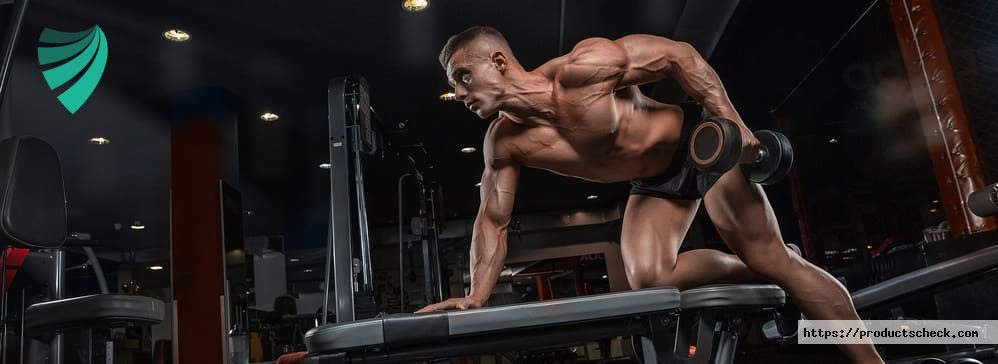Building muscle mass – 7 key principles to keep in mind
Strength training is something we can do for fun but – let’s be honest – most of us dream of muscles and sculpted body.
Everyone who’s ever been lost wandering around a gym and doing random exercises could use some knowledge on the principles of good muscle mass training.
“It’s all about diet” or “first bulking, then cutting” – these are the flagship mottoes around gyms, but they don’t speak much to a newcomer.
– Is eating more important than working out itself?
– What is the best workout for bulking and what for cutting?
– What mistakes not to make, especially at the beginning?
The below guide should make everything clear to you!
Learn the best muscle-building exercises
Rookies tend to believe that muscle strength and body shape depend on working out. That’s only a half-truth because, as we are going to learn further down in the article, success in this regard is mostly guaranteed by what happens after a workout.
However, the workout is where it all starts. We may already be envisioning ourselves with beautifully sculpted muscles in our heads.
The best way to make it true is to learn about the most effective muscle mass exercises available.
Some of them will require having a barbell, which is a must-have of every bodybuilder. The best barbell exercises are:
- squat – it mostly engages quadriceps and biceps muscles in thighs, as well as shoulders, calves, stomach, back and lower back
- bench press – a classic exercise for chest, but also triceps and shoulders
- overhead press – it sculpts deltoid muscles, or shoulders
- press – it engages nearly all groups of muscles, including core muscles, as well as leg and back muscles, which are groups very often omitted during strength trainings, although it mostly influences shoulders
- bent-over row – it engages selected back muscles, depending on whether we row with a pronated or supinated grip, but generally speaking this exercises mostly incorporates the latissimus dorsi muscle
- deadlift – the best thigh biceps exercise, the only one to engage both the knee part and the hip part.
Of course there’s more to life than a barbell.
Working out also requires us to have dumbbells to work on our biceps, and once in a while other tools will come in handy as well.
Let us also not forget about significance of exercises that don’t require any tools, like push-ups or planking, as well as exercises on a dedicated equipment.
If we want to have our muscles grow fast, however, we should pick exercises with free weights (barbell, dumbbells), the so-called multi-joint exercises that engage multiple groups of muscles.
Once we build our mass, we can benefit more from separate exercises (mostly on exercise equipment) that will help us develop specific muscles – as per the above mentioned motto of “first bulking, then cutting”.
Mind the technique
It’s not just about knowing the exercises. You also need to know how to do them properly. Strength training requires a lot of focus for it to be good quality-wise. It means that you need to concentrate on muscle tension.
On top of that, results depend on a proper grip (on a barbell for example) or body pose. What is more, the technique has the biggest impact on workout safety.
With that in mind, it would be nice to use the help of a trainer who will give us an individual approach and tailor the technique to our abilities and predispositions. Another important thing to keep in mind here is preparing a workout plan.
Doing random exercises with a random number of reps and wandering around the gym without any particular direction won’t lead us to results anytime soon.
Keep the golden ratios in mind
What do an ancient philosopher and a modern bodybuilder have in common?
They both know that the beauty lies in proportions. In muscle building and physical exercise, proportions can be applied to many aspects.
Let’s take the balance between working out and the recovery&relaxation time for example. The two of them should have the right proportions maintained between them, because after every workout the muscles need to have a chance to rest.
That’s why, between one intensive strength training and another, there should be a long period for the muscles to relax.
It doesn’t mean we should spend that time slacking in our armchair. After all, we can focus on a different type of activity – go for a bike ride, swim, run or relax and stretch a little doing pilates.
What happens if we keep insisting on exercising our muscles everyday?
The result of such impetuosity might be the opposite of intended. Instead of growing, our muscles will be burned, making us surprised why our strenuous efforts aren’t getting us anywhere.
Don’t exercise until you drop
Speaking of proportions, it’s also a good time to talk about moderation. It’s hard to remember it when doing sports, and once we see the first results of strength training, we just want more and more.
There comes a moment, though, when we need to say: “enough”. And that moment comes during every workout. It is when we are already tired but still vigorous enough to be able to do a few more reps.
Prevent muscle breakdown
Relax, muscle breakdown is not the same as a marital breakdown, because at least it’s worth stopping.
What is it even about?

Maybe we have already come to the conclusion that since recovery causes muscles to develop, it means that working out must cause them to… degrade. That’s the difference between anabolic and catabolic processes. Physical exertion, which in that case is strength training, slightly damages muscle fibers, which means it leads to muscle tissue catabolism.
Catabolism is a type of chemical reaction within metabolism, which also occurs without working out, like during sleep or normal, everyday functioning.
It is actually similar with anabolism, which is a restoration process.
By working out, however, we cause catabolism to increase, which means we have to make sure to intensify the anabolic processes in the muscles.
Make use of the anabolic window
Muscle tissue breakdown continues for another few hours after the workout. Those 2-3 hours are the crucial time period for our muscles, which has to be utilized properly.
We call it the anabolic window – that’s when our body absorbs nutrients better than anytime else.
That’s why within up to 3 hours after workout we need to provide muscles with the right amount of protein to make them bigger and stronger, whereas the body as a whole needs a dose of carbohydrates to restore the energy supplies. If we do it later, our muscles won’t utilize the fuel they were given quite as effectively, which will decrease the effectiveness of the workout itself.
Have a chicken and rice and drink a shake
This is where we seamlessly move on to an athlete’s diet and the extras to it, or supplements. We may hear it a lot at the gym how “it’s all about the diet”, which shouldn’t be a surprise with the above paragraphs taken into account.
We can also add “it’s more about the diet than the supplementation”.
The power that amateur athletes see in creatine, leucine, glutamine or beta-alanine isn’t quite as big as the power of chicken with rice. Out of all supplementsBCAA has been researched enough to be considered a major inhibitor of catabolic processes.
However, BCAA is only intended for those who exercise really intensively, like several regular workouts a week.
An athlete’s diet is an issue too individual to look into it in detail here. It is worth emphasizing, however, that someone who works out to grow muscle mass should provide themselves with 2 g of protein per kilogram of body weight a day.
Another important thing are carbohydrates, which we get our energy from, as well as high quality fats, which should constitute 10% of our entire diet.
Athletes should consume 5 meals a day, with the most hearty and high-calorie one being the one eaten after physical effort. However, it will take some time before we drag ourselves from the gym back home and prepare such meal.
In order not to waste the possibilities given to us by the anabolic window, it is the best to have a protein shake right after the workout. As the name itself suggests, it is first and foremost a source of protein, but also carbohydrates or mineral components.
Still don’t know where to start?
Ask a personal trainer at your gym for advice and look it up on the Internet – there’s a lot of sport authorities full of passion and knowledge who talk about strength training online.

